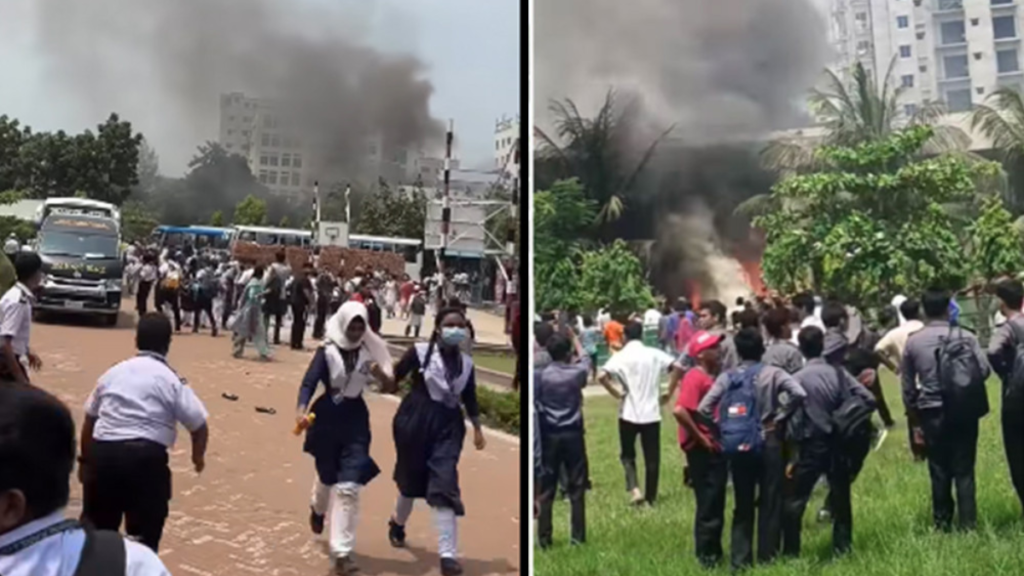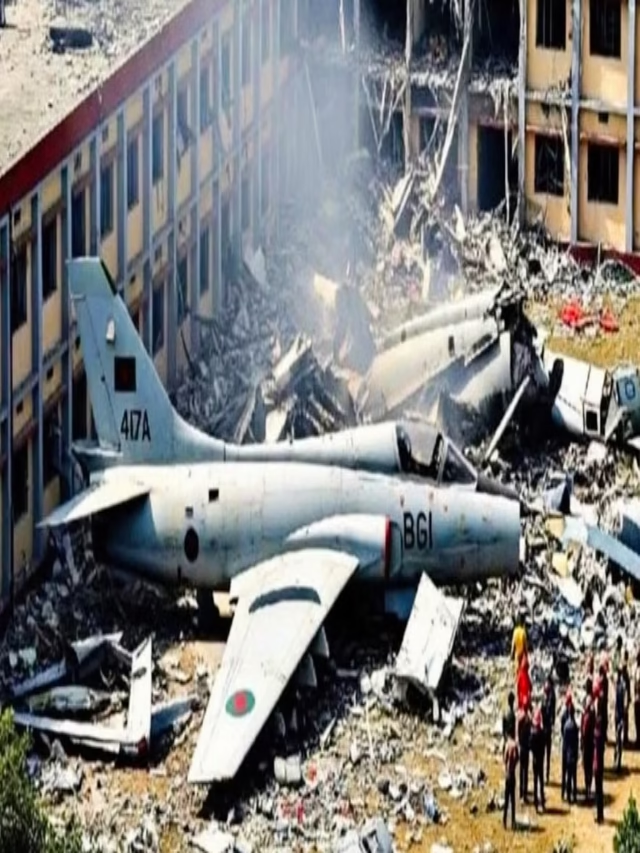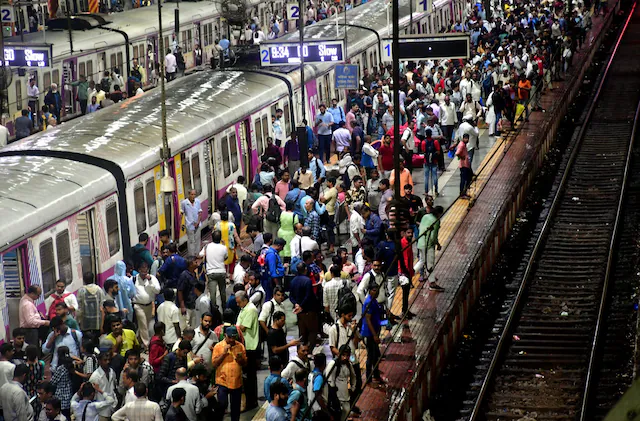1. The Aircraft: A Legacy of Risk Though modernized, the F-7 BGI still echoes the dangers of its Soviet predecessor—
The MiG-21—Dhaka’s Darkest Hour a jet long associated with tragic mishaps and unforgiving flight margins.Although the BGI model features modern upgrades like a digital cockpit and advanced radar, it still inherits structural limitations from its predecessor. Experts have long warned that Dhaka’s the aircraft demands exceptional pilot skill, especially during training missions.The crash occurred during Flight Lieutenant Towkir Islam’sagar initial solo operation with the F-7 BGI. Military reports suggest he made every effort to avoid densely populated areas, but the aircraft’s low altitude and technical failure left him with no safe options.

Dhaka’s Darkest Hour
2. Emergency Response and Medical Crisis
In a rapid response, nine fire service units, six ambulances, and two platoons of Border Guard Bangladesh were dispatched to the scene.,The hospitals across Dhaka struggled to cope with the sudden surge of burn victims Doctors described the injuries as “catastrophic,” with many victims suffering from third-degree burns and trauma-related complication.
3. Mourning and Solidarity
The morning of July 22 unfolded in quiet reverence. Schools remained closed, flags fluttered at half-mast, and communities gathered in prayer. Interim Prime Minister Muhammad Yuan’s addressed the nation, calling the loss “irreparable.” Across borders, leaders like dhaka’s darkest hour in Narendra Modi reached out, offering support and solidarity . Prime Minister Muhammad Yuan’s emphasized the need for accountability, while international leaders, including India’s Narendra Modi, pledged assistance.
The crash has ignited a wave of questions the aircraft properly maintained? Did ground control communicate effectively with the pilot? Was the training protocol adequate for such a high-risk dhaka’s darkest hour a jet? Military officials have launched a high-level investigation, citing a “technical malfunction” as the initial cause. However, critics argue that deeper systemic issues may be at play—ranging from outdated equipment to insufficient pilot preparation.
4. Investigating the Unthinkable
In the aftermath of the jet crash that stunned Bangladesh, the Bangladesh Air Force has initiated a formal investigation to determine what went wrong. As grieving families seek answers, Interim Prime Minister Muhammad Yunus has assured the nation of complete transparency and pledged support to every affected household. On July 22, the government declared a solemn day of mourning, as flags were lowered and prayers echoed across cities and villages. The tragedy now stands as the country’s deadliest aviation disaster since 1984—leaving behind a nation united in sorrow but determined to uncover the truth.
5.Dhaka’s Darkest Hour:
Tragedy, Turmoil, and the Fight for Truth A piercing silence hung over Dhaka as news broke of the devastating jet crash that stole dozens of lives. Families were left reeling, their grief echoed in candlelit vigils and trembling voices. With sorrow deepening across the nation, outrage surged. Citizens demanded transparency, accountability. Interim Prime Minister Muhammad Yunus, visibly shaken, addressed the nation and pledged a full-scale investigation dhaka’s darkest hour. But with mounting pressure and the eyes of the world watching, investigators now face a daunting the truth beneath layers of technical failure, systemic oversight, and emotional wreckage On July 22, Bangladesh.
6. Reform vs. Routine This tragedy presents a crossr
One path leads to complacency, where accidents are dismissed as inevitable and reforms are delayed. Mounting public pressure is urging the Bangladesh Air Force to embrace transparency, modernize its fleet, and reinforce safety standards to prevent future tragedies.
The Bangladesh Air Force now faces a moment of reckoning. Dhaka’s darkest hour a jets like the F-7 BGI comes with risks that can no longer be ignored. Maintenance challenges, lack of after-sales support from Chinese manufacturers, and limited emergency protocols have all contributed to a fragile system.




